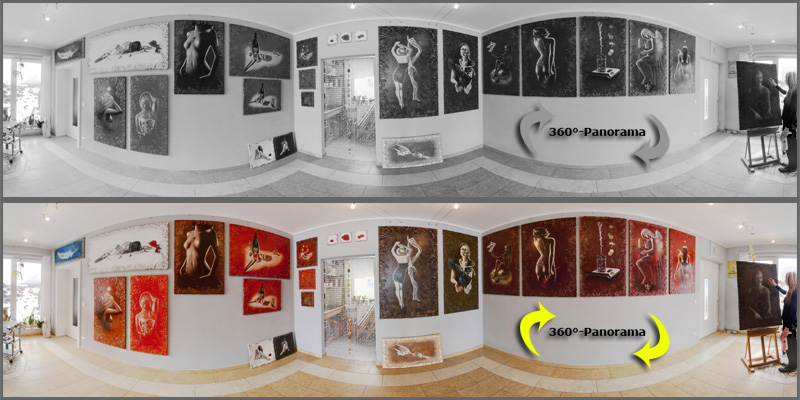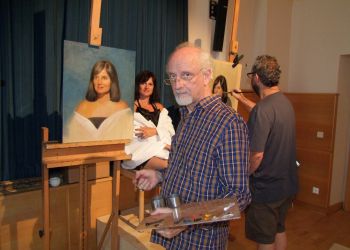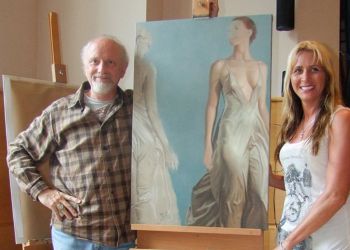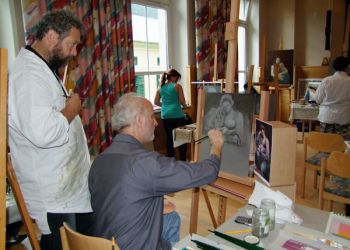This is how an oil painting evolves
The point of origin of my artworks begins with the simplicity of abstract compositions using various incorporated materials and their fluent fusion with the background symbolism of the artwork. The elaborately produced realistic motive painted in oil in the transparent technique of the Old Masters creates the contrast and thus depicts a successful symbiosis between two such different styles and materials.
The stretched canvas or wood receives ten layers of coating (chalk, white pigment and binding agent) whereby the previous coat must always be completely dry. Then it is ground until it is as smooth as paper.
After this, insulation coats are applied (two layers). This is necessary in order to prevent the binding agent of the pigments from being absorbed by the underneath layers of coating, thus avoiding fading colour application.
Finally another two layers of a very special coating are applied which are perfectly suited to very precise and realistic works. Now the canvas must dry for a day before work can continue. The coating applications and drying times involve three to four days.
Subsequently the background is developed which, with the flowing transition to the end of the canvas through the plastic elevation in mixed style, forms an ornamental completion (frame) to the artwork.
For a long time I could find no fitting completion for my works to give me the feeling of fulfilment. I found it important to establish a symbiosis between the simplicity of the abstract composition in mixed style, the intuitive creation of symbolism in the background and the elaborately realistic development of the motives painted in oil in the transparent technique of the Old Masters.
Once this work is dry, which is usually a case of one to one and a half weeks, the imprimatur is applied. This step intuitively allows the symbolism to emerge and to flow seamlessly into the plastic elevations.
Now painting can begin – white lightening! This is painted with egg tempera. Once the motive has been painted the artwork must dry yet again. Subsequently transparent oil glazing is applied until the work gains the required effect of three- dimensionality. Up to twenty layers.
Hereby practically no painting aids are used as, thus, pigment density remains unaffected, allowing the intensity of the colours to show to their best advantage. Often oil paints produced by the artists themselves are used as well as colours that even today are made with granite rolls and cold pressed windmill-linseed oil.
This very expensive and time consuming method produces immaculate, unaltered, lightfast colours.
Between each glazing the work has to dry, otherwise the colours smudge, the under layers may flake and a “colour gap” appears. This can almost never be corrected without showing. Once the work is dry varnish is applied.
An oil artwork using this technique requires a processing period of four to six months.












